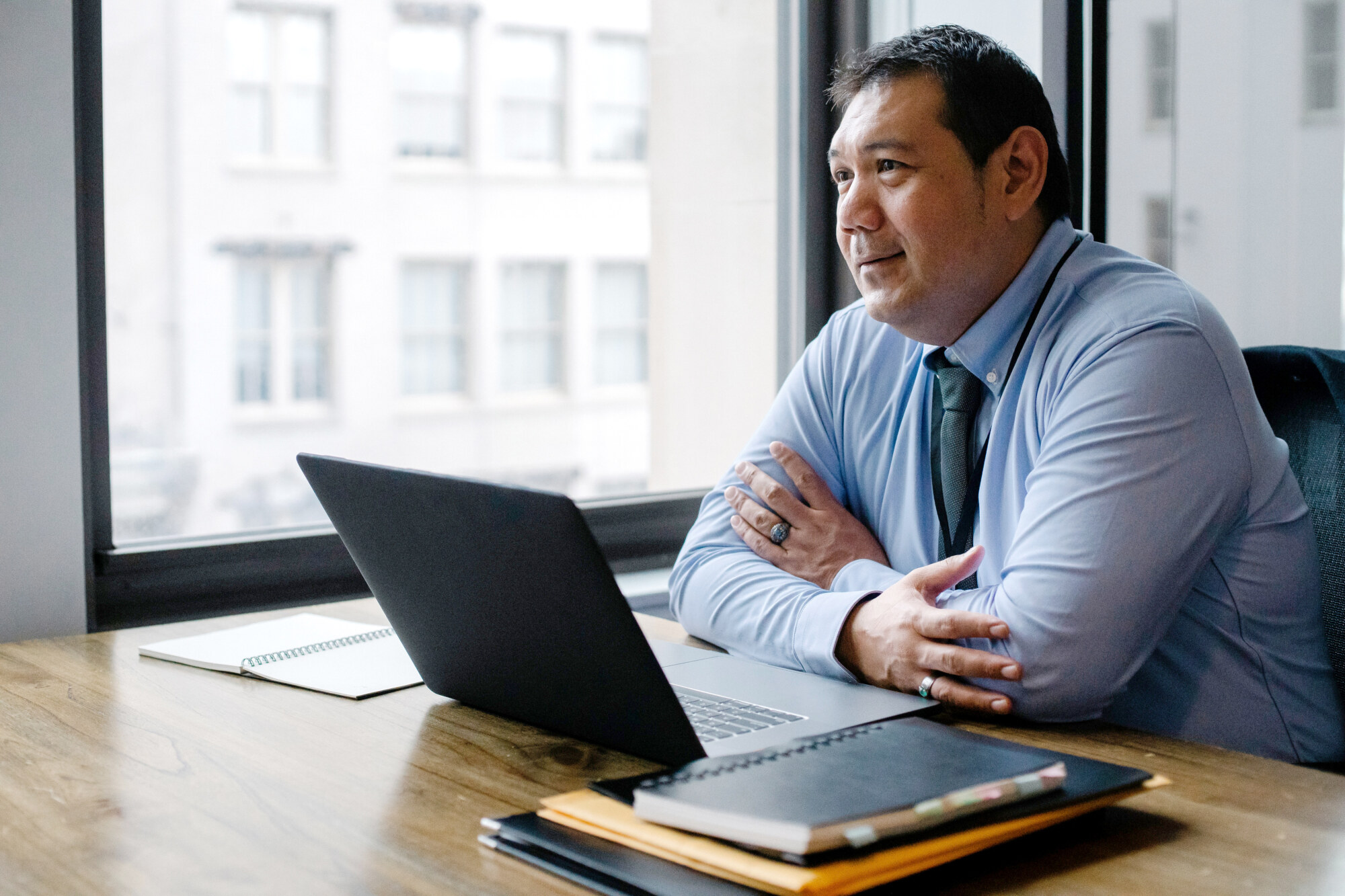Earlier this year, Statistics Canada released new data showcasing how drug- and alcohol-related deaths reached “new highs” during the pandemic, to no one’s surprise. Since the first few months following that transformative March back in 2020, several studies have documented a stark rise in substance use among Canadians—particularly among parents, namely mothers, of dependent teens and young adults. In fact, a 2021 study among one cohort of mothers of young children found that nearly half had developed a dependency on cannabis as a result of pandemic-induced stress, while more than a third reported problematic alcohol use.
These findings aren’t in the least surprising, given the plethora of research that’s been devoted to tracking parents’ and caregivers’ mental health since the initial lockdowns. Findings have consistently shown that parents—especially single, Black, and/or Indigenous mothers—have suffered from disproportionate rates of depression and anxiety due to factors ranging from childcare and school disruptions, loss of employment and financial security, to the loss of community and familial support as a result of physical distancing. The fear of not being able to provide for one’s family has taken an immeasurable toll on parents over the last few years; add in concerns about how their children are faring with such disruptions and a crippling sense of helplessness regarding what they can do to support their children or their own selves, and it becomes not at all difficult to imagine why some have fallen into unhealthy habits like substance use as a way to cope with the stress.
And while this has been a huge challenge for parents and their children to navigate, even more alarming—and unimaginably more burdensome for families—is the drastic rise in adolescent substance use, and by extension, misuse, that has taken place in the aftermath of the COVID-19 pandemic. In tandem with growing rates of mental health issues among youth and young adults, one study conducted among Canadians between the ages of 16 and 25 documented significant net increases in overall use since the start of the pandemic, including a 50 percent increase in cannabis use, 40 and 20 percent increases for vapes and cigarettes, respectively, and a 20 percent growth in alcohol consumption. Today, it’s estimated that around three in every five illicit drug users in Canada are among this age bracket, which also touts the highest rates of addiction and substance abuse compared to any other age group.
But although COVID-related stressors and disruptions have certainly played a hand in such outcomes, including the social isolation and increased screen time that came with the pivot to remote learning, the loss of structure and routine, the loss of opportunities for teens and young adults “to take healthy risks [and] express developmentally appropriate independence” from their parents, and above all, the feelings of boredom and numbness that were prevalent during this time, this isn’t exactly a new phenomenon, either. In fact, even prior to the pandemic, Statistics Canada placed the average age of substance use initiation at just 16-years-old. By the time students reach their senior year of post-secondary school, the majority of them are drinking—close to half of them binge-drinkers—and just under half of them are consuming cannabis.
Impact of Substance Abuse on Adolescents and Their Parents or Caregivers
This, of course, has costly ramifications on young people’s overall health and wellbeing–chief among them being a significantly increased risk of co-occurring mental health disorders, such as depression and anxiety. According to Siovone Bourgeois, Critical Incident Manager and Clinical Counsellor at WPO, between 60 and 70 percent of the young people that she’s worked with had a comorbidity, reflecting similar findings from the Centre for Addiction and Mental Health.
Impaired brain development, or in some cases, even severe brain damage, is also one of the more serious consequences that teens may face as a result of problematic substance use. “Especially with young people, you have to be concerned about the effects of substances on brain development because our brains don’t fully mature until we’re 25,” Bourgeois warns. “Chronic use of cannabis [for example] can actually slow brain development and lead to cognitive decline in later years–even psychosis. Alcohol can also impair development, especially if the person becomes a chronic user.”
But like all cases of addiction or dependency, use among teens and young adults can also produce ripple effects on their families–especially their parents. As Bourgeois maintains, parents of teens and young adults struggling with substance abuse are likely to experience shame–whether internalized or inflicted upon them by other members of their families or communities–due to persisting stigma around addiction, as well as help-seeking.
As a result of or in addition to this shame, parents are also likely to experience:
- Depression, as countless studies have shown that living with someone with a substance use disorder–whether that be a spouse, partner, parent, or child–can take a devastating toll on one’s mental health, evoking feelings of sadness, despair, hopelessness, and helplessness.
- Anxiety, due to both concerns for their child’s welfare in addition to the overwhelming stress that they might be facing in trying to meet their child’s needs.
- Guilt, blaming themselves for their children’s addiction and feeling like they’ve failed as a parent.
- Loneliness, as a recent report found that a majority of parents or caregivers of children with substance use disorders (SUDs) experienced social isolation due to fears of reaching out to others, facing alienation from peers, friends, and family, feeling as though they don’t belong or can’t relate to those in their networks, and having less time for themselves due to the added burdens of substance abuse.
- Physical health issues, as research shows that parents or caregivers of children with SUDs are more likely to experience chronic health conditions such as heart disease, high blood pressure, and diabetes, as well as issues such as fatigue, neck and back pain, and frequent migraines as a result of stress.
- Financial or legal issues, as not being able to pay for drugs “not only creates a financial issue for the young person,” Bourgeois asserts, “but also might lead them to do criminal things and break the law in order to get more substances, like stealing, selling drugs in school,” which can have serious consequences for the whole family.
- Job disruptions, as the stress caused by caring for a child with an SUD can lead to increased and/or chronic absenteeism, burnout and presenteeism, poor work-life balance, and a greater risk of being reprimanded, fired, or laid off.
How the EAP Short-Term Model Can Help
Given the microcosm of consequences that addiction can bring upon not just those struggling with addiction but their entire families as well, and the sensitivity that resolving such issues requires, receiving support from professional services is considered a must in order for families to find a way forward. “Unfortunately, in a lot of areas,” Bourgeois admits, “there just isn’t a lot of support for addiction or support for family members of those with addictions.”
That’s where EAPs step in and serve as a real lifeline, she adds. “Even though it’s short-term services and we’re generalists and we don’t deal with hard-core addiction issues, we are at least able to support family members in the moment or refer people out if we needed to. It’s not a fix-all, but at least if the parent has nowhere else to go or is feeling shame around an addiction issue or is concerned for a family member who’s experiencing addiction, and they can’t see someone face-to-face, they can call into this service and receive support.”
In fact, experts have continuously pointed out the benefits that EAPs can provide to those experiencing a crisis of any kind, who may feel frozen or unsure of what to do next. Through their EAP, employees have access to free and confidential sessions—typically about five or six at a time—with professionally trained and accredited counselors and clinicians, who can assist them with a range of requests, from processing their emotions, researching and/or receiving referrals to other services and resources in their area, to helping them brainstorm “next step” solutions. Immediate family members, namely spouses and dependents, are also eligible to call in free-of-charge.
Single-session therapy (SST), through which employees or their families can call in and receive immediate support at all hours and from anywhere in the world, is another important benefit that EAPs can provide that Bourgeois believes not enough people take advantage of. “When you call into [an EAP for single-session therapy], we’re all masters-level psychologists. If a person is having a rough time, or is experiencing cravings, or has a young person that they’re really concerned about and want to brainstorm how to deal with the issue, or are just feeling really stressed about what to do next, they can call in at any time and have up to an hour with a live clinician who can support them in that moment, and I think that’s a service that’s so impactful, yet so often overlooked.”
Examples of EAP Solutions & Their Benefits in Action
As the intensity of calls regarding youth and young adults has skyrocketed in the fallout of the pandemic, experts claim, a common characteristic shared among virtually every caller—in addition to stress—is uncertainty. Whether that’s uncertainty about how one should respond to a child’s drug use—uncertainty about whether a child’s drug use is a problem at all—or general uncertainty about the future and what will become of their situation, feeling overwhelmed, frozen, unsure, or “stuck” are the emotions most often expressed by parents and caregivers who call into their EAPs. Naturally, as parents and caregivers, they believe that they have to know how to handle every situation, how to help their children find their way out of every challenge that arises; When this proves to be false, their world, their identity, and above all, their mental health, quickly start to deteriorate.
But what’s helpful about EAPs, both Bourgeois and other experts contend, is that each call starts with an individual assessment to identify the issue as well as possible solutions: Parents and caregivers don’t need to be the experts on the case, and just the sigh of relief they get from that alone can be really impactful. By actively listening and asking the right questions (and follow-up questions), counselors can quickly alleviate callers’ uncertainty by naming the problem at hand and co-developing a plan for moving out of it—whether that be through short-term sessions or long-term support from other services.
In fact, the research and referrals aspect of the short-term EAP model is one of its most important perks, Bourgeois argues, given how difficult it is for families to find resources or services in their area. By connecting with a counselor who not only knows how to look for reputable services but also likely already has an extensive list of previously researched facilities to refer callers to, families can be promptly directed to further resources in their area, from treatment and rehabilitation centers, summer camps and aftercare programs, to support groups and child and/or family counselors. EAP clinicians are also in a unique position where they can leverage employee resource groups (ERGs) created by their client organizations to sponsor recurring meetings structured around the topics of addiction, substance abuse, and family care, with the goal of encouraging colleagues to support and learn from one another.
Such communal support, in tandem with counseling support, is what Bourgeois says most parents or caregivers need most as they battle a mountain of stigma and cultural ignorance surrounding addiction. “When you’re talking about what issues family members face, there’s often the issue of shame. We’re moving more toward a space where it’s not just a case of, ‘you need to have the willpower to get over the addiction,’ and more people are starting to recognize that it’s a very complex illness that interacts between your genetic predisposition along with environmental factors present during your early development, [but] I think there’s still a lot of shame around reaching out for help—families reaching out for help—because some family members will think that, ‘oh, it’s just the person with the addiction’s responsibility; they’re the problem, they’re the one that has to get better,’ without really looking at the factors feeding into that person’s addiction and [the role that parents play in rehabilitation and prevention].”
By talking to those with shared experiences as well as culturally competent counselors, parents and caregivers can discern what is and isn’t their responsibility when it comes to their child’s struggle with substance use, which may help to remove some of the unnecessary shame or blame they place on themselves and the guilt that they feel, while at the same time illuminating them on some of their actions (or inaction) that can actively—even if inadvertently—influence their child’s substance use and exacerbate their risk of abuse or addiction. Parents or guardians’ use of substances, for instance, can “certainly have an effect on adolescents,” Bourgeois warns.
“If you’re a family member or parent dealing with substance use in a severe way, you end up dealing with neglect of children, trauma, and children taking on the roles of parents—and that’s really hard because they’re taking on responsibility for things they shouldn’t have to as a child,” she argues, adding that as a consequence, children “might model after their parents by turning to substances to deal with their issues,” in effect creating a cycle of generational trauma.
And this, of course, is something that no parent or caregiver wants for their child, Bourgeois notes, testifying that most of the calls she receives are from anxious family members concerned about the wellbeing of their loved ones, who are desperate for guidance on how they can best support them. Common questions and concerns that Bourgeois often responds to include:
- “Is my child’s use of substances within the normal range, or is it a real issue, and what can I do?”
- “Are they using that substance to deal with their mental health, and how do I support that person?”
- “How is this substance affecting my young person’s ability to think? What are the long-term effects on their brain?”
- “How can I make this person get help?”
- “How can I set boundaries?”
With the most common questions usually pertaining in some way to “How can I discern between ‘normal’ or at least ‘expected’ use for a teenager or young adult, versus what’s a problem?”
Top EAP Benefits: Knowledge-Sharing and Educating
That said, when it comes to addressing family’s—especially children’s—substance use issues, what makes EAP services particularly helpful is their ability to promptly inform and educate family members on various aspects of addiction: from warning signs to risk factors, environmental and familial influences to the genetic and mental health components, knowing how to set boundaries to planning a safe and effective intervention (and knowing when it’s time to do so), EAP counselors can instill parents and caregivers with the wisdom needed to make carefully informed-decisions about how to approach their loved ones and their addiction with sensitivity, caution, and above all, kindness.
In fact, this is especially important for children, whom studies indicate are significantly less likely to develop problematic substance use when they have a close and open relationship with their parents or caregivers, because of their unique vulnerabilities to substance misuse and their general lack of awareness of the risks that come with using substances (including the risk of addiction)—most of which are out of their control. According to the Government of Canada, such factors that contribute to youth’s greater susceptibility to substance use and subsequent misuse include:
- Social norms. This includes the use of substances within their own homes, families, or social networks—especially by parents and siblings; exposure to and prevalence of promotional ads and marketing campaigns; and perceived attitudes toward substance use among those in their environment.
- Peer pressure. Innumerable studies throughout the last two decades have showcased how peer pressure plays an outsize role in influencing adolescents’ substance use, particularly when it comes to poly-substance, riskier, and heavier use. This is especially the case for post-secondary students, who perceive more frequent peer use and face more overt pressures to engage (think parties and Greek life).
- Representations in pop culture. From explicit content in music or music videos, to glorification of drug and alcohol use in television shows and movies, recurrent exposure to “positive” media portrayals has been shown to inspire drug use initiation or experimentation among younger audiences.
- Perceived benefits. In one large study conducted by the Canadian Centre on Substance Abuse, researchers found that a majority of the youth surveyed either engaged in or at least thought positively of cannabis use due to their belief that it helps people focus, relax, sleep, think creatively, and alleviate symptoms of stress, anxiety, and depression. Students are also more likely to engage in the illicit use of stimulants for academic enhancement and better work performance.
- Lack of concern for or awareness of potential harms. On its own, adolescence is a developmental phase characterized by marked increases in risk-taking and novelty-seeking behaviors. While researchers are still trying to find a scientific explanation for teens’ and young adults’ willful indifference toward known risks associated with drug and alcohol use, experts do note that adolescents’ impulsivity in conjunction with poor education and communication from parents, educators, and the media on the harmful effects of substance use, explains much of their lack of hesitation to engage and experiment with drugs and alcohol without considering possible consequences for doing so.
Thus, what both the Government of Canada and Bourgeois underscore when it comes to supporting teens and young adults through their struggles with substance abuse, is the importance of having open, ongoing, and two-way conversations. “I think the biggest thing when looking at supporting people is opening up that conversation with kindness, openness, and non-judgment because I think for a lot of people there is that background trauma or those certain factors that make them turn to substances,” Bourgeois argues. “When you have a history of trauma, homelessness, abuse, no support, and poor development, for example, for some people that’s why they never get over their addictions.”
Actively listening to and trying to understand why a child or loved one is using substances, avoiding being judgmental and resisting the urge to lecture or use scare tactics, and focusing on facts rather than emotions or fear, are examples of some of the many tips that the Government of Canada recommends to parents or caregivers who really want to help their children through an addiction. As Bourgeois attests, “Young people are going to try different substances. And as parents or loved ones, how do you manage that? What’s expected usage versus a full-blown substance use issue? I’m of the belief that no use is probably the best for all young people, but having been a young person and having worked with young people, I can testify to the fact that having a more open conversation about what these things do to you is a much better approach than saying ‘no, never do this.’”
But for concerned parents and caregivers, taking that step back and reinforcing a child’s agency even when they’re making riskier decisions, isn’t always easy; it’s natural to want to try to control a child’s actions as a way to keep them safe and protect them from harm—unfortunately, it’s just not practical. And that is where the benefits of accessing an EAP to address a child or young adult’s addiction really shine through: helping parents or caregivers not only find the right counseling, clinical, and professional support for their child, but also helping them to address the ways in which they may be inadvertently perpetuating or aggravating the situation, and offering guidance on how they can be more helpful and supportive moving forward.



































